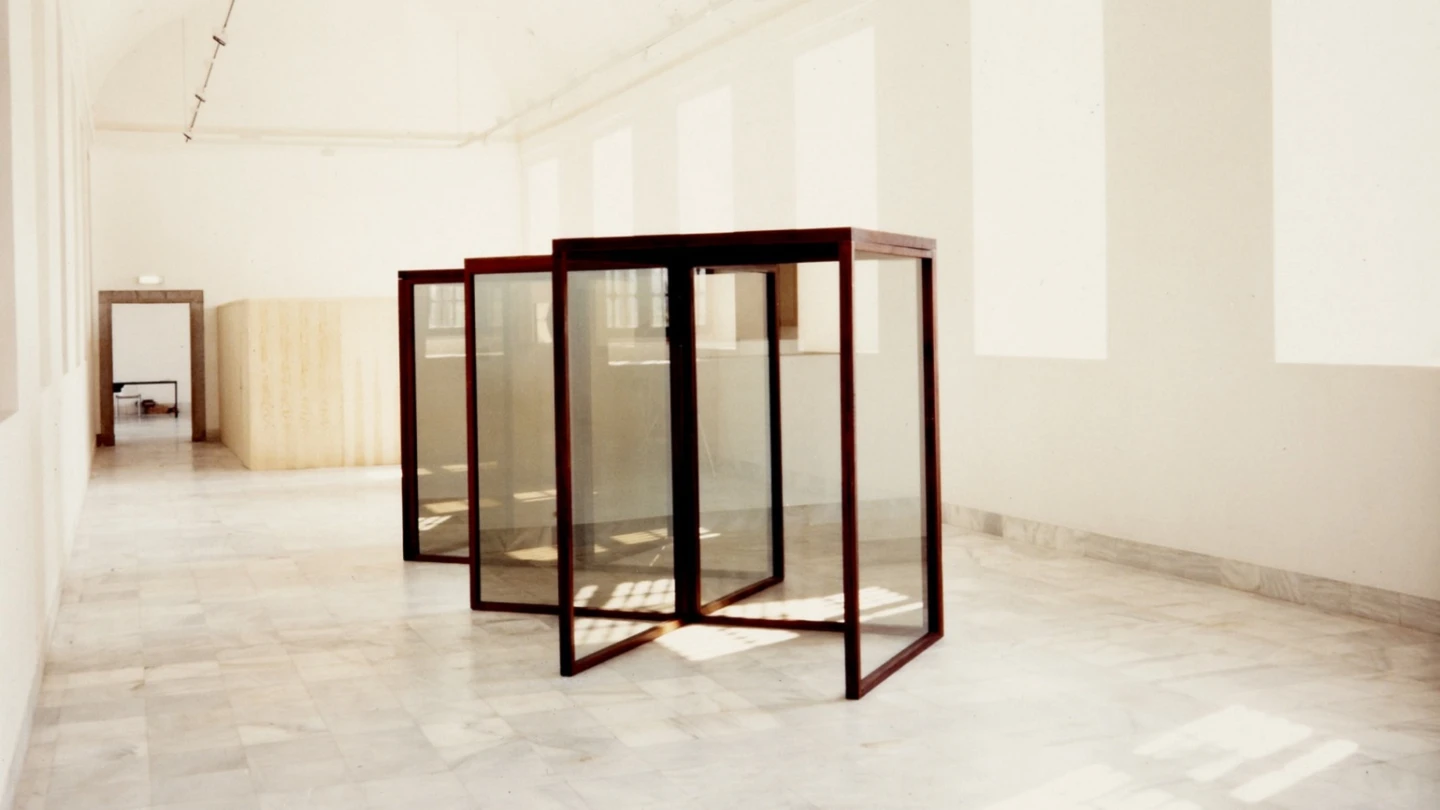Dan Graham

In 1969, the year of his first solo exhibition, Graham makes his first performances. At this early stage his interest is the relationship between body movements and space or with a second subject. This progressively leads his approach towards a series of actions based on the verbalisation of observations on behaviour and identity of the self and / or others’ identity, as well as a growing involvement of the public.
The video installation, Present, Continuous, Past(s) (1974), produced again for this exhibition, represents a further step in the artist’s investigations. A CCTV (Closed Circuit T.V.) is available in a room with mirrored walls and projects the images collected from inside the room itself. This closed circuit projects with a planned delay, so that the viewer can see in the mirrors their immediate past at the same time as their present. Different time sequences come together in one room.
The video installations Dan Graham makes from 1974 are focused on creating action spaces where the public participates. A year later, in the piece Two Viewing Rooms, he incorporates one of the materials which he will continue to work with frequently: the two-way mirror, reflective on one side and transparent on the other. This element gives rise to one of the most recognisable structures in this artist’s style, the Pavilions, which he starts working on in 1978. These spaces, created to be displayed outside, function both as sculptures and architectural enclosures which eventually have various uses, such as a shelter, greenhouse or children's playroom. For this exhibition, one of these has been installed in the Sabatini Garden at the Centro de Arte Reina Sofía; it allows visitors to observe themselves through their reflections as object and subject at the same time and pontificate the changing notions of interior and exterior, urban and natural, individual and collective.
Artists
Organised by
Centro Nacional de Exposiciones and Musée d'Art Moderne de la Ville de Paris
Image gallery
